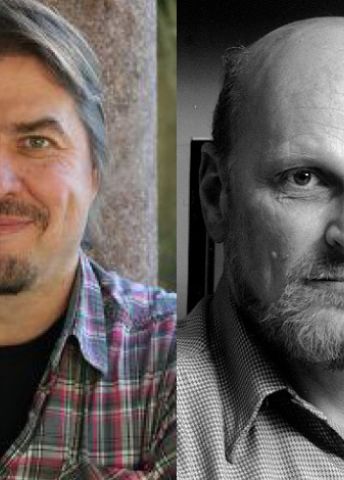
Program for mathematics 2019
Visting Professors
Eero Saksman, Professor at the University of Helsinki, Finland and
Paul Wiegmann, Professor at the University of Chicago, USA
Nominated by:
KTH Royal Institute of Technology
Visting Professors
Eero Saksman, Professor at the University of Helsinki, Finland and
Paul Wiegmann, Professor at the University of Chicago, USA
Nominated by:
KTH Royal Institute of Technology
Modern physics in a stricter costume
Eero Saksman is a Professor at the University of Helsinki, Finland, and Paul Wiegmann is a Professor at the University of Chicago, USA. Thanks to a grant from Knut and Alice Wallenberg Foundation, they will be visiting professors at the Department of Mathematics, KTH Royal Institute of Technology, Stockholm.
Many physical phenomena that clearly exist in nature still lack an exact theoretical description. Particularly different quantum phenomena, both within hydrodynamics and condensed matter physics, are still seeking their final mathematical form. The project is a step in that direction with two visiting researchers where Paul Wiegmann represents the physics perspective, while Eero Saksman will contribute from the theoretical mathematical side.
The quantum phenomena are usually apparent in the microscopic world, among atoms and molecules. But especially at extremely low temperatures, certain quantum phenomena become manifested even on a larger scale. Among the most famous are superconductors, where electric current flows without resistance. Another example is helium liquid, which, when cooled down, behaves very peculiarly, for example it can float up the walls of its beaker. Helium has become a quantum fluid whose behavior can only be explained by quantum physics.
A model for studying quantum physics for hydrodynamics is the Coulomb gas - a collection of randomly scattered particles that bump into each other in pairs. Wiegmann has been pioneering in the physical study of Coulomb gases in two dimensions. Further exploration of this model, together with special theories of quantum gravity, can pave the way to the long-sought-after quantization of hydrodynamics that has so far been considered intractable.
Saksman has also approached similar questions based on purely mathematical reasoning. Particularly applicable here is the theory of multiplicative chaos, which describes some random phenomena, where Saksman is a world-leading expert. Since the creation of multiplicative chaos theory in the mid-1980s, it has found applications in various areas of probability theory, from turbulence calculations to financial markets. The theory of multiplicative chaos is also fundamental to the quantum field theory, which in turn forms the basis for all the condensed matter physics. In recent years, the theory of multiplicative chaos has also been used to provide a rigorous mathematical basis for parts of quantum field theory, which in turn is fundamental for the condensed matter physics.